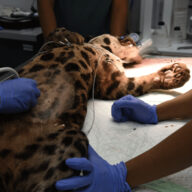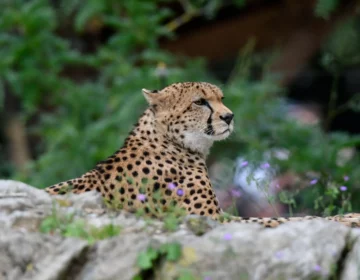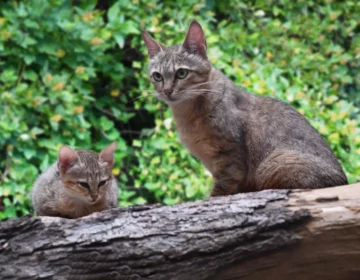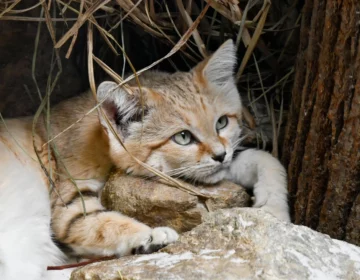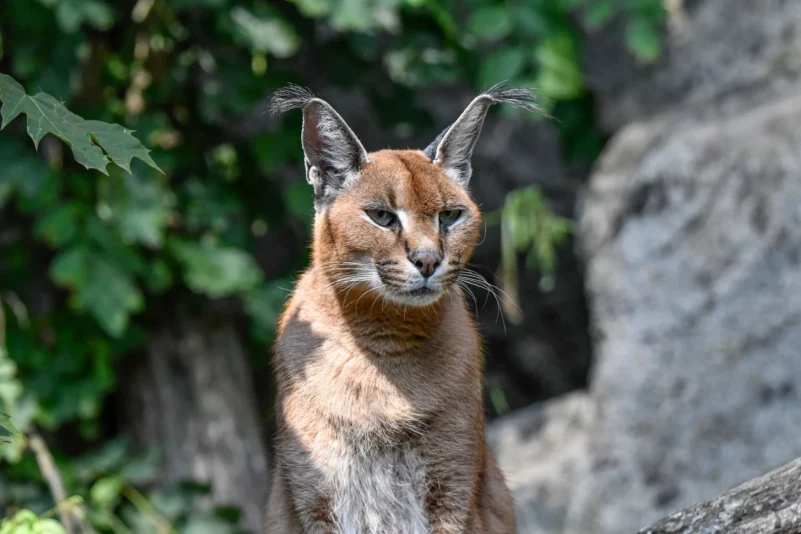
Caracal
Caracal caracal
Caracal
APPEARANCE
The Caracal is a medium-sized cat with a slender, tall body and long legs. It is the biggest of the African small cats. The caracal’s fur is short, fawn-brown to brick-red, without any pattern, and its underside is whitish. Dark lines and white spots are visible around the nose and eyes. It has triangular ears ending in tufts of hair 4-5 cm long. Its tail is short and measures about a third of its body length. It has stiff hairs between its pads as an adaptation for moving on sand. Like other desert species, the caracal has excellent eyesight and hearing.
DISTRIBUTION AND HABITAT
The caracal has a wide range that extends from Africa to central and southwest Asia. It is found from Africa to Turkey through the Arabian Peninsula and the Middle East to Turkmenistan and northwestern India. On the African continent, it is not found except in the tropical forests of western and central Africa and the deserts of Namibia and the central Sahara.
It lives in a variety of habitats and tolerates very dry conditions. It is found in semi-deserts, steppes, savannas, dry and moist forests or evergreen forests. It prefers open and drier areas and scrubland. Caracals are not found in real deserts.
BEHAVIOUR
The caracal is a solitary animal and has a mainly nocturnal lifestyle, but can also be active during the day, depending on the habitat and daytime temperature. In winter it increases its daytime activity.
FOOD
The caracal is a generalist predator. It preys mainly on a variety of small and medium-sized mammals and birds. Its victim is usually animals weighing less than 5 kg, such as young antelopes, hares, rodents, birds, mice and sometimes invertebrates, fish and reptiles.
MAIN THREATS
One of the main threats to the caracal is habitat destruction. Hunting, trapping and poisoning are other major threats.
